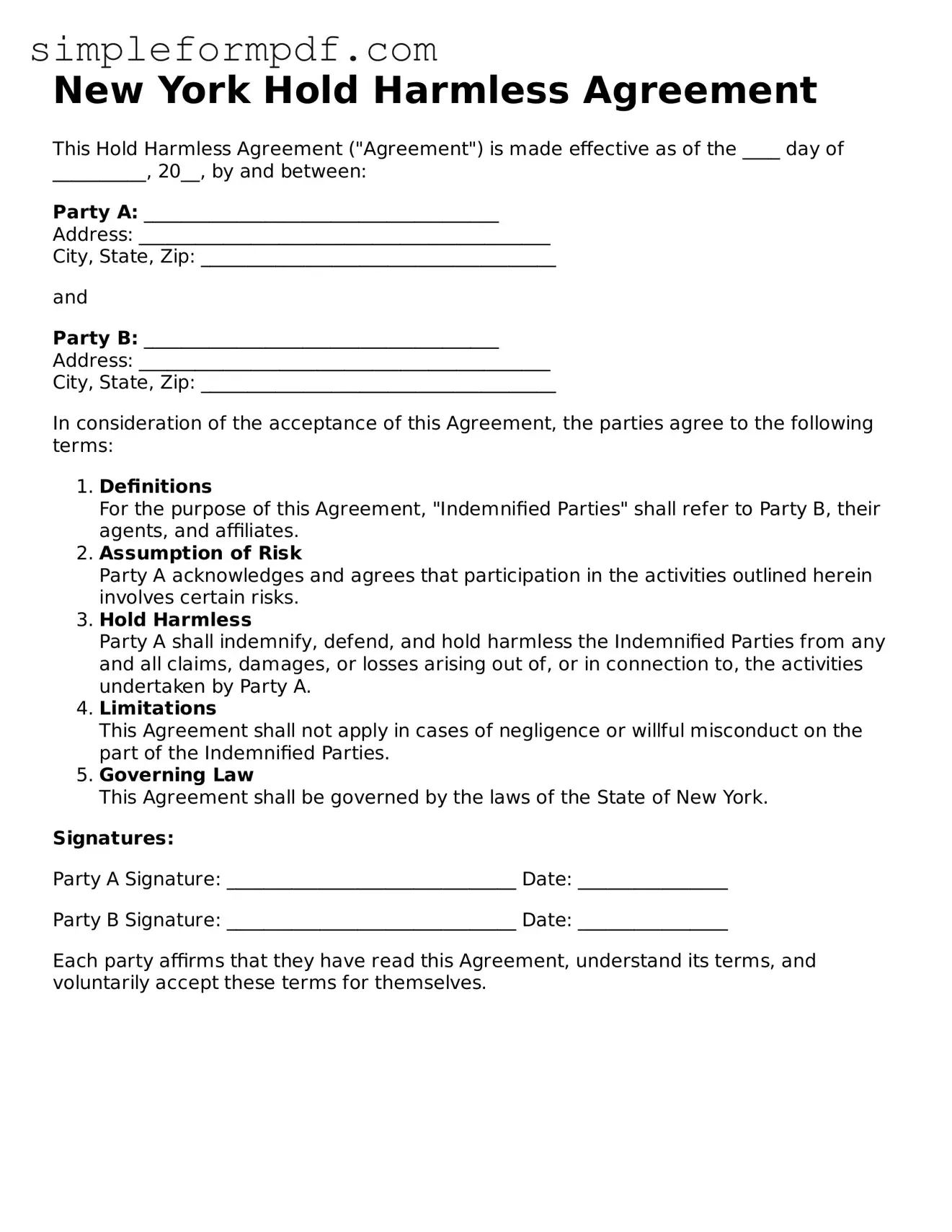New York Hold Harmless Agreement
This Hold Harmless Agreement ("Agreement") is made effective as of the ____ day of __________, 20__, by and between:
Party A: ______________________________________
Address: ____________________________________________
City, State, Zip: ______________________________________
and
Party B: ______________________________________
Address: ____________________________________________
City, State, Zip: ______________________________________
In consideration of the acceptance of this Agreement, the parties agree to the following terms:
- Definitions
For the purpose of this Agreement, "Indemnified Parties" shall refer to Party B, their agents, and affiliates.
- Assumption of Risk
Party A acknowledges and agrees that participation in the activities outlined herein involves certain risks.
- Hold Harmless
Party A shall indemnify, defend, and hold harmless the Indemnified Parties from any and all claims, damages, or losses arising out of, or in connection to, the activities undertaken by Party A.
- Limitations
This Agreement shall not apply in cases of negligence or willful misconduct on the part of the Indemnified Parties.
- Governing Law
This Agreement shall be governed by the laws of the State of New York.
Signatures:
Party A Signature: _______________________________ Date: ________________
Party B Signature: _______________________________ Date: ________________
Each party affirms that they have read this Agreement, understand its terms, and voluntarily accept these terms for themselves.
